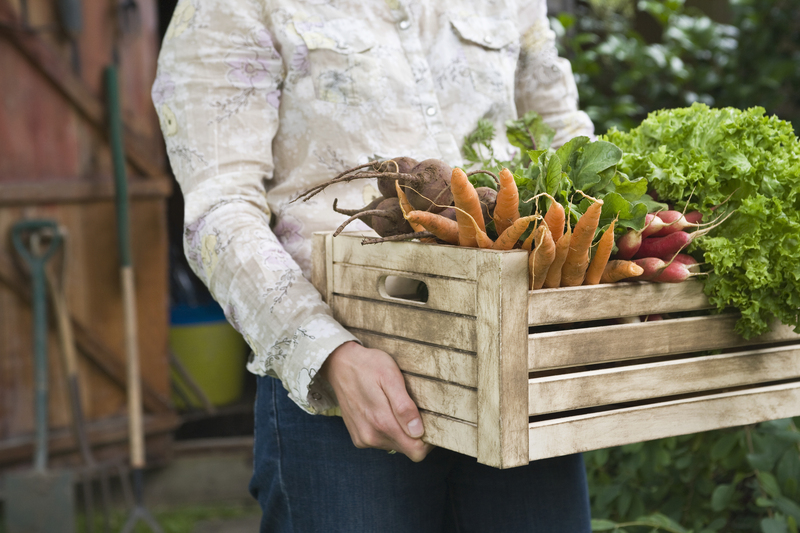Rainwater Harvesting in Your Garden: Setting up a Sustainable Drainage System
Posted on 18/09/2024
In recent years, there has been a growing trend towards sustainable living and finding ways to reduce our impact on the environment. This includes implementing practices like rainwater harvesting in our gardens. Rainwater harvesting is a process of collecting and storing rainwater that falls on our roofs, driveways, and other surfaces, and using it for various purposes such as watering plants or flushing toilets. Not only does this help conserve water, but it also reduces the strain on municipal water supplies and reduces stormwater runoff into streams and rivers. In this article, we will discuss how you can set up a sustainable drainage system in your garden through rainwater harvesting.
Why Rainwater Harvesting?
There are many benefits to incorporating rainwater harvesting into your garden. First and foremost, it helps reduce your water bill by utilizing free and readily available rainwater instead of relying solely on municipal water sources. This is especially beneficial in areas where water scarcity is a concern. Rainwater also contains natural minerals and nutrients that are beneficial for plants, making it a better option for watering them compared to treated tap water.
Another major advantage of rainwater harvesting is its impact on the environment. By reducing the demand for municipal water supply, it helps conserve this precious resource for future generations. It also reduces stormwater runoff, which can carry pollutants and cause erosion in rivers and streams. Implementing a sustainable drainage system through rainwater harvesting can help mitigate these issues.

How to Set Up a Rainwater Harvesting System
Setting up a rainwater harvesting system in your garden may seem daunting at first, but with the right tools and knowledge, it can be easily done. The most common type of rainwater harvesting system is a rooftop system, where rainwater is collected from the roof of your home or any other structure. Here are some steps to follow:
1. Start by determining the size of your rooftop catchment area. This will help you determine the amount of rainwater that can be collected in a given storm.
2. Install gutters and downspouts to channel the rainwater from your roof to a storage tank. Make sure these are properly sloped to allow for efficient water flow.
3. Choose an appropriate storage tank for your needs. It should be made of durable, non-toxic materials like plastic, fiberglass, or concrete. The size of the tank will depend on your catchment area and water usage.
4. Install a first-flush diverter to divert the first flush of rainwater, which can contain debris and pollutants, away from your storage tank.
5. Install a filter system to remove any remaining debris and sediments from the collected rainwater before it enters the storage tank.
6. Connect a pump to your storage tank if you plan on using the collected rainwater for other purposes besides watering plants in your garden.
7. Set up a distribution system that includes pipes, valves, and sprinklers or drip irrigation systems to efficiently distribute the harvested rainwater to your garden.
The Pros and Cons
Like any other system, there are both pros and cons to implementing rainwater harvesting in your garden. Let's take a look at some of them:
Pros:
- Reduces water bills.
- Conserves water resources.
- Improves plant growth due to natural minerals and nutrients in rainwater.
- Reduces strain on municipal water supplies.
- Mitigates stormwater runoff pollution and erosion.
- Can be used for various purposes like watering plants, washing cars, or flushing toilets.
Cons:
- Initial setup costs may be high.
- Requires regular maintenance and cleaning of filters.
- Limited by catchment area size and rainfall patterns.
- May not be suitable for areas with heavy air pollution or acid rain.

Tips and Takeaways
- Consider using a rain barrel for smaller rooftop catchment areas.
- Regularly clean and maintain your gutters, downspouts, and filters to ensure efficient water flow.
- Use a mesh screen over your storage tank to prevent mosquitoes and other insects from breeding.
- Choose drought-resistant plants for your garden to further reduce water usage.
- Check with your local government for any regulations or permits required for rainwater harvesting.
Conclusion
Rainwater harvesting is a simple and effective way to implement sustainable practices in your garden. It not only helps reduce your water bill but also contributes towards conserving water resources and protecting the environment. By following the steps outlined in this article, you can easily set up a rainwater harvesting system in your garden and reap its many benefits. So, next time it rains, don't let that valuable resource go to waste - harvest it and put it to good use!

